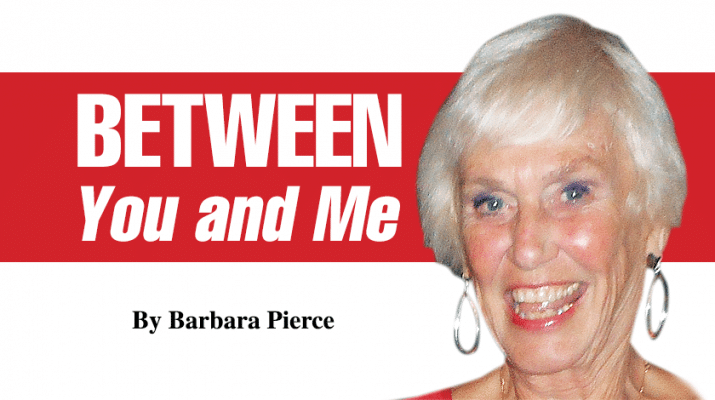How I learned to give up codependency
By Barbara Pierce
“I’d throw up! I’d vomit all over the place!”
The therapist I was seeing for the first time looked me in the eyes as he said these words. “If I was saying the things about myself that I hear you saying, I’d throw up!”
It was like a punch in the face. After I caught my breath, I had to admit he was right. My life was that bad. I had just left a man who mostly depended on me to support us both. He sat around chain smoking cigarettes and watching TV while I trotted off to work each day.
Now I was madly in love with a man who would spend time with me — if I drove two hours to where he lived and hung around with him while he smoked pot and drank with his buddies.
Yeah, I’d have to say that is nauseating. The therapist “got” me. And I got it. And that was my wake up call.
Guess I was what’s called “co-dependent.” There are as many definitions for codependency as there are people who have it, but it means we tend to put the needs and wants of others above our own needs.
People who are codependent tend to focus on their significant other to the detriment of their own well being. They spend a lot of time trying to keep their significant other happy.
Originally, it referred to people who were in a relationship with an alcoholic or drug addict. It was broadened to include anyone in a relationship that is one-sided and emotionally destructive; anyone who has a need to please to the point that you will sacrifice your own well being if that’s what it takes.
But here’s the thing: “Almost everyone — 96 percent of all Americans — suffers from codependency,” said an article in The New York Times, published in 1990. This article says something like “this amorphous disease,” a national epidemic, is mostly a business, generating income for therapists and authors of self-help books.
And that pretty well sums up what I believe about it. Women, especially those of my generation, were taught to put others first and patiently tolerate the bad behavior in the way others treat us. Maybe our relationship isn’t perfect, but then, whose is, really? Be nice, be long suffering, yes, be a martyr if that’s in the cards for you. Play the hand you’re dealt.
Downright disorder
So when does this nice, tolerant behavior become a disorder? A thing that makes others vomit?
Like a wife covering for an alcoholic husband, like a mother denying her child’s delinquent behavior. Yes, looking back, I can see I took it too far and put up with bad conditions too long. I did change when I heard my therapist reframe my “nice” behavior.
“We teach others how to treat us,” said a friend. And that hit home too. “Through what we say and what we don’t say — through what we do and don’t do.”
Boundaries are necessary to take care of ourselves. For me, that brings up the image of a white picket fence protecting me. That fence can’t be too solid, or too high, because then I will never get close to anyone. That fence can’t be too puny or weak, or it will be trampled.
Boundaries in the physical world are easy to see — fences, walls, signs. It’s easy to know where my property ends and yours begins. Emotional boundaries are just as necessary, but harder to see. Establishing and maintaining boundaries is a skill. It’s a skill that many of us don’t learn.
We not only have the right to have boundaries, but we are responsible for how we maintain those boundaries, how we let others treat us. We have the right to say “no” if something is not in our best interests.
The basic boundary-setting word is “no.” I often say “yes” instead of “no” because I want to please others. It’s easier to say “yes” than “no”. But I do need to say “no”, so that others don’t take me for granted, and even lose respect for me. Then I become resentful.
People-pleasers try to accommodate everyone, to make everyone happy. We may put our personal needs on the back burner and agree to do things that our instinct says we shouldn’t do.
It’s OK to say “no” and I’ve had to learn. Say it in a nice way with a sympathetic face. We don’t owe anyone an explanation. Don’t explain, just say, “I’m sorry, but I have to say ‘no’ right now.” The less you explain, the better.
And trust yourself. You know yourself best. You know what you need, want and value. The needs and feelings of others are not more important than your own.
Saying “no” is the first step. The second step is to let the person’s reaction be their business.
It does get easier.
• Barbara Pierce is a retired licensed clinical social worker with many years of experience helping people. If you would like to purchase a copy of her book, “When you Come to the Edge: Aging” or if you have questions for her, contact her at barbarapierce06@yahoo.com.

